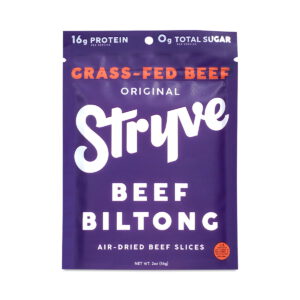- Understanding the Benefits of Healthy Eating
- Setting Realistic Goals
- Creating a Balanced Meal Plan
- Finding Healthy Alternatives
- Staying Accountable and Tracking Progress
- Overcoming Challenges and Maintaining Motivation
Grocery shopping doesn’t have to be a chore; it can be an enjoyable adventure, especially when you’re equipped with the right knowledge and tools. The first step is to make a list before you hit the store, ensuring you stay focused on your healthy eating goals. Start by including a variety of items that cover all food groups. Make sure to include vegan foods such as beans, legumes, whole grains, vegetables, and fruits. For those looking for budget-friendly options, consider buying seasonal produce as it’s often cheaper and fresher.
When shopping for local foods, consider visiting farmers’ markets or community-supported agriculture (CSA) programs. These not only support local farmers but also provide you with access to organic produce that is rich in nutrients. Look for colorful fruits and vegetables that are in season, such as strawberries in spring or squash in autumn, to keep your meals exciting.
For fitness enthusiasts, add items like quinoa, sweet potatoes, and Greek yogurt to your cart. These foods are packed with protein and complex carbohydrates that will help fuel your workouts. Additionally, pay attention to important ingredient safety by checking the labels for added sugars, preservatives, or artificial ingredients. Opt for whole foods whenever possible, as they are less processed and more beneficial for your health.
When shopping online, ensure that you use reputable websites. Check reviews and ratings for products and sellers to avoid any potential safety issues. Additionally, be cautious of delivery fees and consider bulk purchases to save on costs. Many websites offer discounts for signing up for newsletters or for first-time buyers, so keep an eye out for those opportunities!
To enhance your grocery experience, consider exploring international aisles for unique and healthy ingredients. You can often find specialty items like tofu, tempeh, or coconut milk that can add variety to your meals. Remember to think ahead and choose foods that can be prepared in multiple ways to maximize their use and minimize waste.
Don’t shy away from purchasing frozen fruits and vegetables. They are often just as nutritious as fresh options and have a longer shelf life, making them perfect for quick meals when you’re short on time. By following these tips, you’ll not only stay motivated but also make grocery shopping an integral part of your journey toward healthy eating.
Setting Realistic Goals
Setting realistic goals is crucial for maintaining motivation in the journey of healthy eating. When you set clear, achievable objectives, you create a roadmap that guides your actions and helps you track your progress. Recognizing that each individual’s journey is unique is the first step toward setting appropriate goals.
It’s essential to apply the SMART criteria—Specific, Measurable, Achievable, Relevant, and Time-bound—when establishing your dietary goals. For example, instead of setting a vague goal like “eat healthier,” a SMART goal would be “incorporate at least five servings of fruits and vegetables into my daily diet for the next month.” This clear directive allows you to measure your success and adjust your strategy if necessary.
| SMART Goal Component | Explanation |
|---|---|
| Specific | Your goal should clearly define what you want to achieve. Instead of “reduce sugar,” it could be “limit sugar intake to less than 25 grams per day.” |
| Measurable | You need a way to measure your success. This can be through tracking food intake, using apps, or keeping a journal. |
| Achievable | Set goals that are realistic given your current lifestyle, commitments, and resources. Avoid aiming for drastic dietary changes that are hard to maintain. |
| Relevant | Your goals should align with your broader health objectives. If you want to lose weight, your eating goals should promote weight loss, not hinder it. |
| Time-bound | Set a timeline for your goals to create a sense of urgency and motivation. For instance, “For the next 30 days, I will meal prep every Sunday.” |
Additionally, consider setting short-term and long-term goals. Short-term goals can serve as stepping stones toward larger objectives. For instance, if your long-term goal is to lose 20 pounds, start with a short-term goal of losing 1 to 2 pounds each week through healthy eating choices and regular physical activity. Celebrating these small successes can help reinforce your commitment and encourage you to stay motivated as you see tangible results from your efforts.
Accountability is another important aspect of setting goals. Sharing your objectives with a friend or joining a support group can provide encouragement and motivation. There are various platforms available, both online and in-person, where individuals with similar interests can exchange tips and share progress. This social aspect can make the process of healthy eating more enjoyable.
Combining these structured approaches to goal-setting with a focus on gradual changes can lead to sustained habits. It’s vital to remember that setbacks may occur; it’s not about perfection, but persistence. Even if you stray from your goals momentarily, what matters is your ability to get back on track. By committing to realistic and positive steps forward, individuals can inspire themselves to embrace the journey of healthy eating with enthusiasm and resilience.
Creating a Balanced Meal Plan

Grocery shopping for healthy eating can be an enjoyable adventure with the right tips and strategies. Start with creating a comprehensive shopping list that includes a variety of foods from different categories. Aim to fill your cart with colorful fruits and vegetables—they aren’t just appealing to the eye, but they pack a nutritional punch! For families, consider seasonal produce, which not only tends to be cheaper but also supports local farmers and reduces your carbon footprint.
When it comes to vegan foods, look for sources of protein like lentils, chickpeas, and quinoa, which are versatile and can be used in a multitude of dishes. Additionally, don’t forget to browse the bulk bins for options like oats, nuts, and dried fruit, which can be both economical and healthy. These items can elevate your snacks and meals while keeping your budget in check.
As you navigate the aisles, prioritize organic items particularly for the “Dirty Dozen”—fruits and vegetables that are known to have higher pesticide residue, such as strawberries and spinach (Environmental Working Group). Focusing on organic options not only supports better farming practices but also aligns with a commitment to your family’s health.
For the fitness enthusiasts in the family, include items that offer a good balance of carbohydrates and protein for energy. Consider adding sweet potatoes, brown rice, or even whole-grain pasta for quick yet nutritious meals. Greek yogurt or plant-based protein powders are excellent choices for smoothies or post-workout snacks.
Shopping online has its own set of advantages, but it’s important to prioritize security and safety. Use reputable grocery sites and check for SSL certification (a lock symbol in the URL bar) to ensure your personal data is protected. Pay attention to product details and choose sellers with high customer ratings to avoid any unpleasant surprises. Many online stores offer a subscription model which can save you money on staple items.
While shopping online, you can also curate your shopping cart based on reviews and prepare for the week ahead by planning meals around what you find. Frozen fruits and vegetables are often just as nutritious as fresh, making them an excellent choice for quick meals and reducing waste, as they have a longer shelf life. Keep your pantry stocked with essentials like canned tomatoes, beans, and spices to whip up nutritious meals without the need for frequent shopping trips.
When you visit the store, consider shopping the perimeter first; that’s where most whole foods are located. Fresh produce, meats, and dairy products dominate these aisles. Trying to limit your time in the center aisles—which often contain processed and unhealthy options—can help you maintain your commitment to healthy eating.
Check the expiration dates on products and take a moment to inspect packaging for any signs of damage. When buying pre-packaged or frozen items, scrutinize the ingredient list for hidden sugars or preservatives to enhance your meal planning choices without sacrificing health.
Incorporating healthy eating habits into your grocery shopping routine doesn’t have to be daunting. By employing these simple tips and staying mindful of your choices, you can make grocery shopping an integral and motivational part of your journey to healthier living.
Finding Healthy Alternatives
Many people often find themselves craving their favorite comfort foods, which might not always align with their healthy eating goals. However, the key to maintaining motivation lies in discovering healthy alternatives that satisfy your cravings without compromising your nutrition. Substituting traditional ingredients with healthier versions can transform beloved recipes into satisfying options that align with your dietary objectives.
For instance, if you adore creamy pasta dishes, consider using whole grain or chickpea-based pasta. These alternatives provide more fiber and protein, thereby enhancing the nutritional profile of your meal. Instead of heavy sauces, opt for lighter options such as homemade pesto made from fresh basil, nuts, and a drizzle of olive oil, or a version enriched with avocado for healthy fats.
When it comes to snacking, replace chips with air-popped popcorn seasoned with your favorite spices, or fresh vegetable sticks served with hummus. Air-popped popcorn provides that satisfying crunch while being a whole grain snack that’s low in calories. If you have a sweet tooth, try substituting refined sugars in your baking with natural sweeteners like honey or maple syrup. Moreover, you can use unsweetened applesauce or mashed bananas as a substitute in many recipes; they add sweetness and moisture without increasing the calorie count significantly.
Consider also the power of herbs and spices. They can elevate the flavors of your dishes without the need for excess salt or unhealthy fats. Experimenting with spices like paprika, cumin, and turmeric can enrich your meals, making them more enjoyable, which can help you stay motivated in your healthy eating journey.
In your quest for healthy alternatives, keeping an eye on portion sizes is just as important. Even wholesome foods can contribute to weight gain if consumed in excess. Portion control can be effectively managed by using smaller plates and bowls, which can trick your mind into thinking you are eating more than you actually are.
Lastly, do not shy away from seeking out new cuisines that celebrate healthy ingredients. Mediterranean, Asian, and Mexican cuisines often offer dishes that emphasize fresh vegetables, lean proteins, and healthy fats, providing an array of tastes without sacrificing health. Incorporating variety not only keeps meals exciting but also aids in sticking to your healthy eating plan.
“Let food be thy medicine and medicine be thy food.” – Hippocrates
By substituting healthier options and being mindful of your portions, you can enjoy the foods you love while staying true to your health goals. This approach not only keeps your meals satisfying but also makes it easier to maintain motivation on your healthy eating journey.
Staying Accountable and Tracking Progress
 Tracking your progress is crucial to understanding how far you’ve come on your journey towards healthy eating. Incorporating methods to monitor your dietary choices and achievements can reinforce your commitment and foster a sense of accomplishment. One effective way to stay motivated is through journaling. Documenting what you eat on a daily basis allows you to see patterns in your eating habits, making it easier to acknowledge successes and identify areas for improvement.
Tracking your progress is crucial to understanding how far you’ve come on your journey towards healthy eating. Incorporating methods to monitor your dietary choices and achievements can reinforce your commitment and foster a sense of accomplishment. One effective way to stay motivated is through journaling. Documenting what you eat on a daily basis allows you to see patterns in your eating habits, making it easier to acknowledge successes and identify areas for improvement.
Digital apps can also be a game changer when it comes to maintaining accountability. Numerous user-friendly options exist that allow you to log meals, track nutrients, and even set reminders for hydration or meal prep times. Many of these apps offer visual progress tracking features that can transform abstract numbers into tangible results. By visualizing your progress, you can keep your motivation levels high, especially on challenging days.
In addition to personal tracking, consider sharing your journey with friends, family, or online communities. Engaging with others who share similar goals can provide much-needed support and encouragement. You might find that a little friendly competition, such as weekly meal prep challenges or sharing your favorite healthy recipes, can elevate your dedication and make the process enjoyable.
Utilize a reward system as a motivating factor in your journey. Set mini-goals and celebrate milestones with non-food rewards such as a new workout outfit, a day out, or a wellness-related book. This strategy fosters a positive association with your achievements, reinforcing your healthy decisions without compromising your dietary goals.
In addition, regular check-ins with yourself are beneficial—self-reflection helps maintain clear objectives as you assess your progress. Ask yourself what’s working, what’s not, and how you can improve. This practice not only enhances your self-awareness but also empowers you to adjust your strategies, ensuring that your journey remains aligned with your motivations and lifestyle.
Staying flexible and open to adjustments in your approach is also vital. Life is dynamic, and flexibility can lessen the pressure that leads to discouragement. If you find yourself falling behind or facing challenges, remind yourself that it’s part of the journey. The goal isn’t perfection, but rather persistence in striving to improve your habits.
- How can I stay accountable to my healthy eating goals?
- Consider using apps for tracking your meals, joining support groups, or sharing your goals with friends or family. Engaging with others who share similar health objectives can provide motivation and encouragement.
- What tools can I use to track my progress?
- Journals, food tracking apps, and even photo logs can be effective. Many apps provide visual representations of your progress, helping you stay motivated.
- Is it important to celebrate small wins?
- Absolutely! Celebrating small accomplishments helps reinforce positive behaviors and keeps you motivated over time. Choose non-food rewards to maintain focus on your health journey.
- How do I choose a meal tracking app?
- Look for user-friendly apps that offer features like food databases, custom tracking options, and progress visualizations. Read reviews to find one that fits your needs and preferences.
- What should I do if I hit a plateau in my progress?
- Reassess your goals and strategies. Consult your food log to identify any patterns and make adjustments accordingly. Sometimes, changing up your routine can reignite motivation.
- How can social support impact my healthy eating journey?
- Having a support system can significantly enhance your motivation. Sharing experiences, challenges, and successes with others can keep you accountable and encouraged along your path.
- What does it mean to stay flexible in my approach?
- Staying flexible means being open to adjusting your goals and methods when faced with challenges. Accepting that setbacks are part of the journey can reduce stress and maintain your commitment to healthy eating.
Overcoming Challenges and Maintaining Motivation
Grocery shopping can be a delightful voyage towards healthy eating, especially when you come equipped with valuable tips and strategies. Begin with drafting a detailed shopping list that ensures a variety of nutrient-rich foods from multiple categories. Aim to include an abundance of colorful fruits and vegetables that not only please the eye but also pack a significant nutritional punch. Families can particularly benefit from seasonal produce, often cheaper and fresher, fostering a connection to local agriculture.
Don’t forget to explore vegan foods, such as lentils, chickpeas, and quinoa, which can be versatile staples in your kitchen. Venture into the bulk bins for items like oats, nuts, and dried fruits, a smart shopping choice that balances health with cost-effectiveness. These quality ingredients can enhance snacks and meals while being gentle on your wallet.
For those prioritizing organic intake, target the “Dirty Dozen”—fruits and vegetables with higher pesticide residues, including strawberries and spinach, according to the Environmental Working Group. Choosing organic yields better quality produce and plays a key role in supporting sustainable farming practices that benefit your family’s overall health.
Fitness enthusiasts should reach for items that provide the right blend of carbohydrates and protein to maintain energy levels. Whole grains like brown rice and oats, sweet potatoes, and dairy alternatives such as Greek yogurt or plant-based protein powders make excellent additions. These foods can support your active lifestyle while contributing to your nutritional goals.
When it comes to online grocery shopping, prioritize security by sticking to trusted websites. Check for SSL certification to ensure your personal information is safeguarded. Always read product details and reviews to help avoid mishaps. Websites often have discounts for first-time purchases or loyalty programs that can help you optimize your grocery budget. When preparing for the week ahead, consider purchasing staples in bulk, as these can significantly reduce your overall costs and help minimize those last-minute shopping trips.
While browsing online, think ahead about meal planning; frozen fruits and vegetables often retain their nutritional value and can make meal prep quicker and simpler. Stock your pantry with essentials like canned beans, tomatoes, and various spices to ensure you’re always able to whip up a healthy meal without the hassle of frequent shopping.
Don’t forget about the in-store experience—start your journey in the produce section, where fresh ingredients abound. This area typically houses whole foods, while the center aisles are often laden with processed snacks that can tempt you. Investigate other departments with wholesome choices, such as meats and dairy, and keep an eye out for clean labels—look for products free of added sugars and artificial ingredients. Remember to always check expiration dates on items, especially pre-packaged goods, to ensure quality.
By being mindful when grocery shopping, you can effectively integrate healthy eating habits into your routine. Utilize these tips to create an enriching grocery shopping experience, transforming it into a fun and motivating facet of your dietary journey!
New Customers Offer!
Free Gift for the new customer
$24 Value, When You Subscrib Visit Thrive Market












